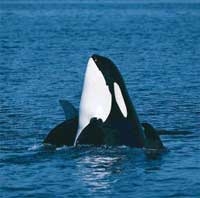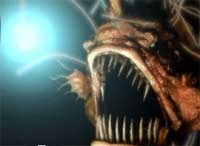Decorator crabs are a term for various species of crabs belonging to the superfamily Majoidea. These species are known for using materials from their surroundings for camouflage or to deter predators.
From spider crabs, marine crabs, algae crabs, to toothy crabs and arrow crabs, there are over 700 different species of crabs under the Majoidea superfamily – decorator crabs. These crabs often create a layer of camouflage to cover their bodies with a variety of “decorations” that sometimes exceed our imagination.
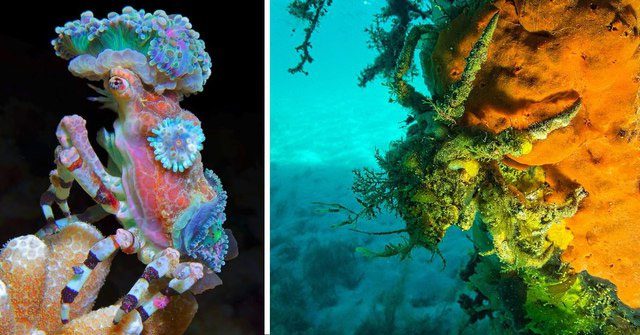
Decorator crabs belong to several different species within the Majoidea superfamily, using materials from their environment to hide or deter predators. They adorn their bodies by attaching mostly stationary animals and plants for camouflage, and toxic organisms to repel predators.
According to Marine Madness, most of these crabs use other marine organisms as “building materials.” These include corals, seaweeds, sponges, sea fans, anemones, seagrasses, sea urchins, bryozoans & hydrozoans (specific organisms often confused with algae or corals in some localities), and even small crustaceans.
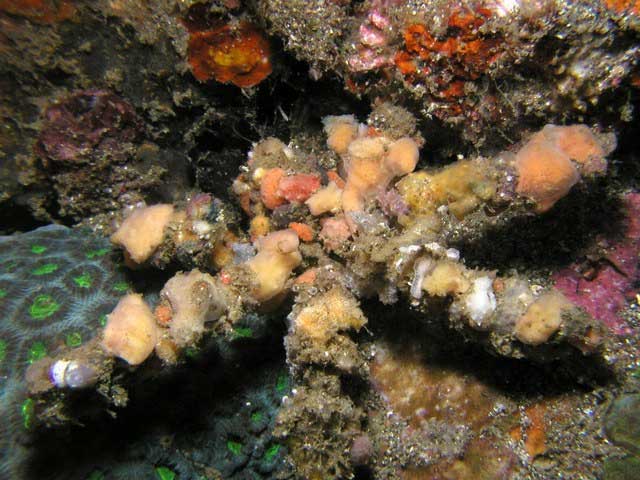
In 1889, William Bateson observed in detail how these crabs attach materials to their backs. He noted that if you intentionally remove their camouflage layer, they will immediately recreate a camouflage layer identical to the previous one as soon as they are released.
However, using other organisms for camouflage does not mean they have to kill them. On the contrary, they form a symbiotic relationship that benefits both parties.
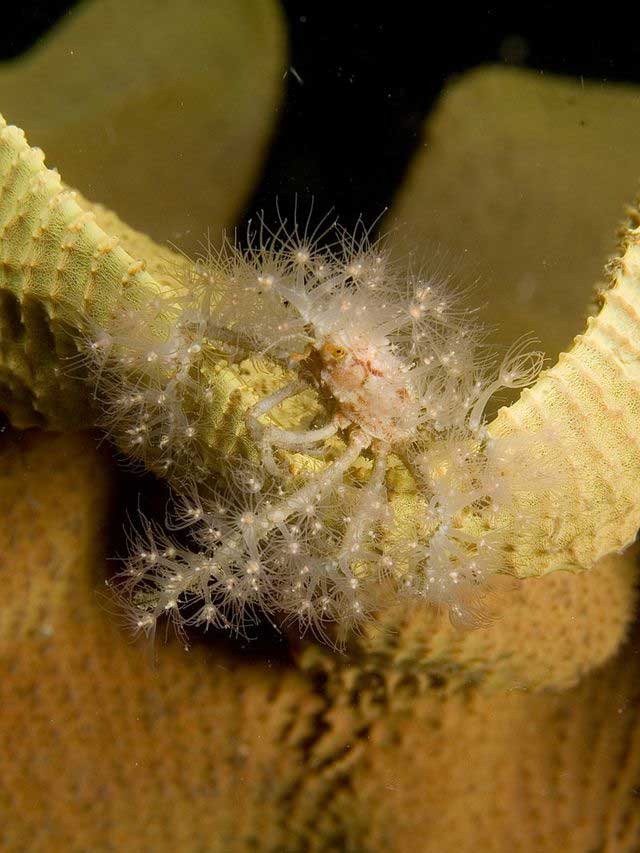
In nature, animals are pressured to adapt to blend into their habitats or conceal their shapes; prey animals thereby evade predators, while predators can attack without being detected.
The uniqueness of decorator crabs regarding their decorations has been clearly demonstrated by a study conducted in 1940 by British zoologist and camouflage expert Hugh Bamford Cott, who studied the large spider crab (Hyas araneus) in the Atlantic.
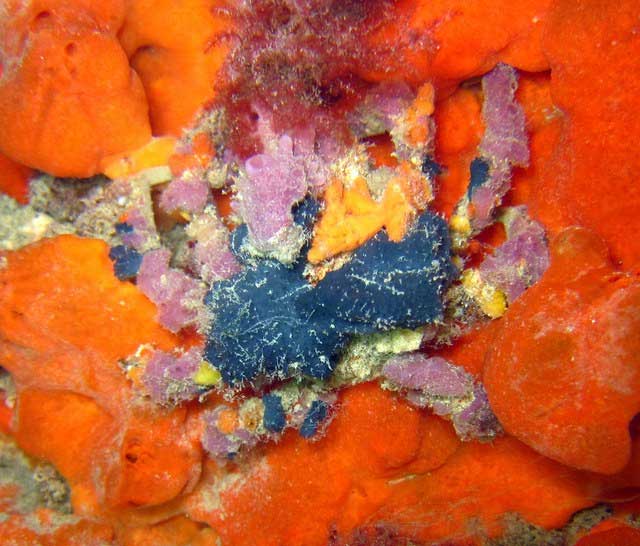
Considering studies conducted by various authors, Hultgren and Stachowicz showed that some species are very specialized in their choice of camouflage. For example, Pelia tumida decorates exclusively with sponges; Macropodia rostrata and Libinia dubia select the toxic algae Dictyotahesiais in certain areas, while Inachus phalangium chooses similar algae for the most exposed parts of its body; and Stenocionops furcata selects three colors of sea anemones Calliactis for its carapace.
Cott moved some of these decorator crabs from their homes off the coast of England to various locations and found that each time they were placed in a new position, they would immediately start redecorating their camouflage layer with local materials – in fact, each crab adjusts its camouflage to suit its habitat.
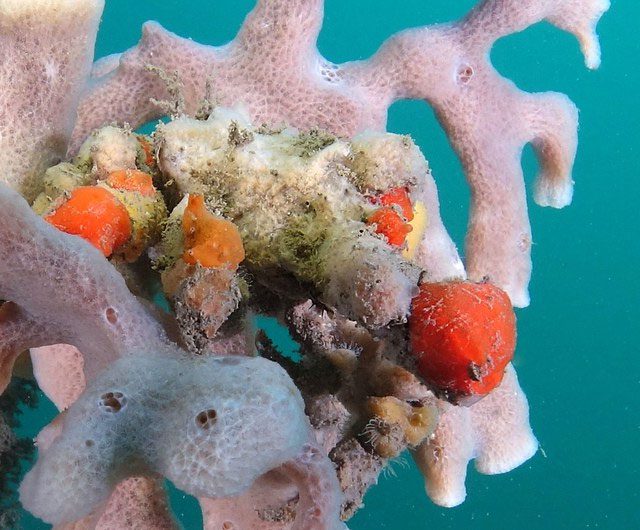
They are found across the world’s oceans and seas. They can be seen at night due to the reflection of their eyes in the sea. The camouflage ability of these animals is so good that they are difficult to recognize during the day.
In addition to camouflage for self-protection, some crab species have gone further in using decorations – employing them to enhance their defensive capabilities in other ways. One example is the use of anemones, sea urchins, and hydrozoans, all of which can deliver uncomfortable stings to any potential predator that gets too close. On the other hand, applying toxic types of seaweed can leave an unpleasant (and potentially lethal) taste in the mouth of any predator daring to attack them.
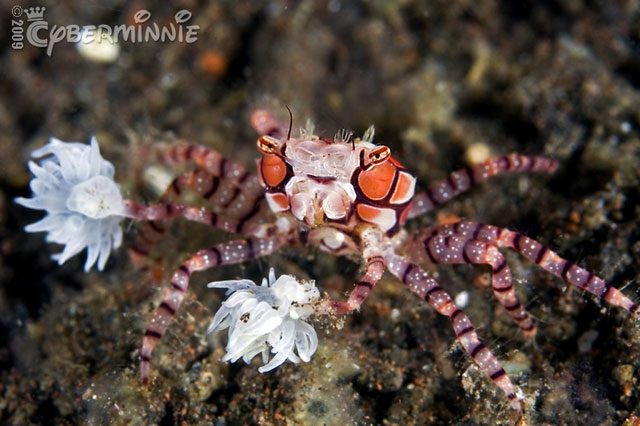
In fact, the lifespan of these crab species has yet to be specifically estimated.
Moreover, some species even know how to exploit their camouflage to attack. A prime example is the boxer crab (Lybia tessellata), also known as the pom-pom crab, which attaches anemones and sea urchins to its claws and uses them as weapons.
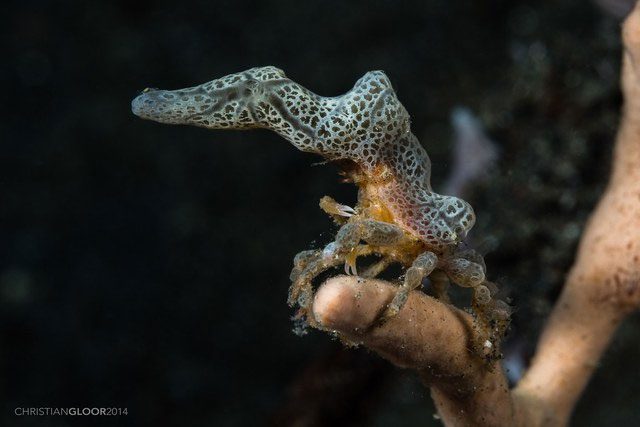
There are about 700 species of decorator crabs. Some species include Acanthonyx dentatus, Macropodia rostrata, Oregonia gracilis, Libinia emarginata, Achaeus spinosus, and Camposcia retusa.
If provoked or attacked by a predator, they will threaten the predator and try to deter it by waving the anemones around, their tentacles fully equipped with cnidocytes (stinging cells).
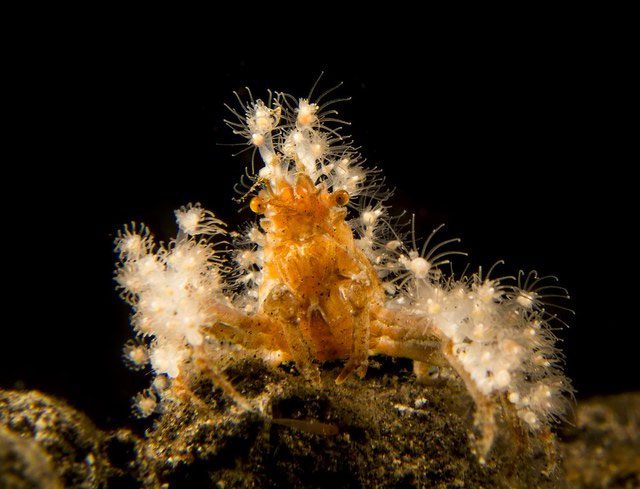
The total population size of these crabs is currently unclear.
Other decorator crab species even take advantage of the aquatic organism Hydrichthella epigorgia, which, like corals, consists of numerous small polyps that work together as a collective organism. However, unlike most hydrozoans, the polyps of this species do not have feeding tentacles but instead have sticky polyps that catch tiny food particles and slowly transfer them to their “mouth.” Some particularly cunning species have exploited this characteristic and attached them to their claws to create a pair of effective sticky fishing lines.









































